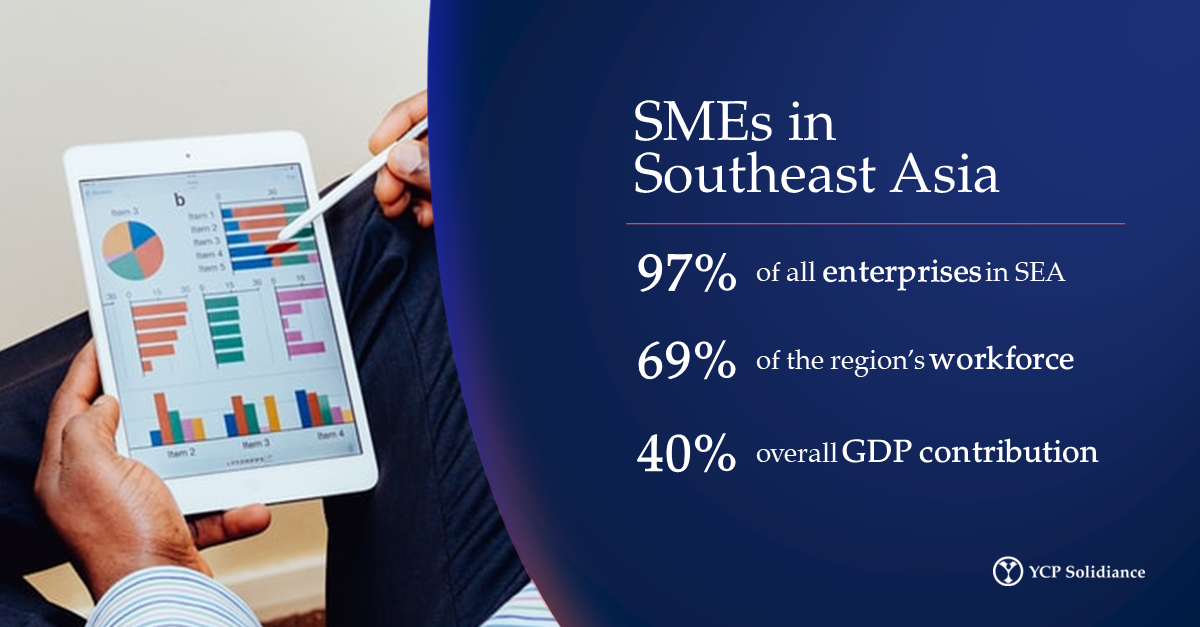Small- and medium-sized enterprises, more commonly known as SMEs, are the backbone of business in Southeast Asia. According to the YCP Solidiance white paper “Road to Recovery: Post Pandemic Business Outlook in Southeast Asia,” SMEs make up 97% of all enterprises, employ 69% of the workforce, and bring 40% of GDP value across the region. 
Helping SME Growth in Indonesia
Indonesia’s SME market currently has a size of 62 million SMEs, with 98% of this number comprised of micro-enterprises. While the sector largely struggled at the height of the COVID-19 pandemic, it seems that SMEs are slowly getting back on track: according to Bank Rakyat Indonesia, SME loan disbursement in the first quarter of 2022 was nearing pre-pandemic levels, signaling a positive shift with SMEs now more confident in taking loans for operational and growth expenses.
However, there is still much to be done to help SME growth in Indonesia. Despite being the internet economy value leader in ASEAN-6, digital transformation still needs to be accelerated further for the Indonesian sector in order for SMEs to scale up successfully.
The Indonesian government is also actively aiding the development of SMEs via upskilling and training programs through the Ministry of Industry and the Ministry of Trade. The government is also building further IT infrastructure to allow for better connectivity and increase competitiveness, and to foster the continued growth of Indonesia’s digital economy.
Private sector players also have a unique opportunity to address gaps in the market. YCP Solidiance Manager Raymond Setiawan, who works with clients and companies in Jakarta, notes that fintech is an emerging market trend for start-ups that can also possibly present opportunities to aid SME growth through unique and innovative solutions.
In fact, online payment gateway HitPay, which currently operates in Singapore and Malaysia, has recently announced its plans to enter new ASEAN markets—including Indonesia—to offer its SME-facing platform to aid small- and medium-sized enterprises in digital financial expansion.
Scaling Up SMEs
Digitalization is the key focus point for SME growth in 2022 and beyond, but the YCP Solidiance white paper “Road to Recovery: Post Pandemic Business Outlook in Southeast Asia” also highlights six key areas to help Indonesia’s SMEs thrive:
- Grow Sales by accessing new marketing channels and developing insights-driven launches for new products and services
- Manage Operations by optimizing the supply chain, simplifying procurement, and monitoring pricing to improve profitability
- Manage Cash by anticipating liquidity challenges, cost/cash flow forecasting, and exploring digital financing methods
- Simplify Banking through data-based funding decision making
- Manage Employees by upskilling talent, and streamlining and automating employee management and payroll
- Internationalize by securing overseas financing, and connecting with buyers and suppliers
Creating support for SMEs to scale up their operations and pursue growth will entail an end-to-end approach that prioritizes the incorporation of digital transformation through the entire process. SMEs who are able to adapt and embrace digitalization will be sure to thrive, as more on Indonesia’s people rely completely on the internet economy.
For more reports on digital transformation post-pandemic in Southeast Asia, subscribe to our newsletter here.
You may also read the following insights on how ASEAN is dealing with the post-pandemic economy:





